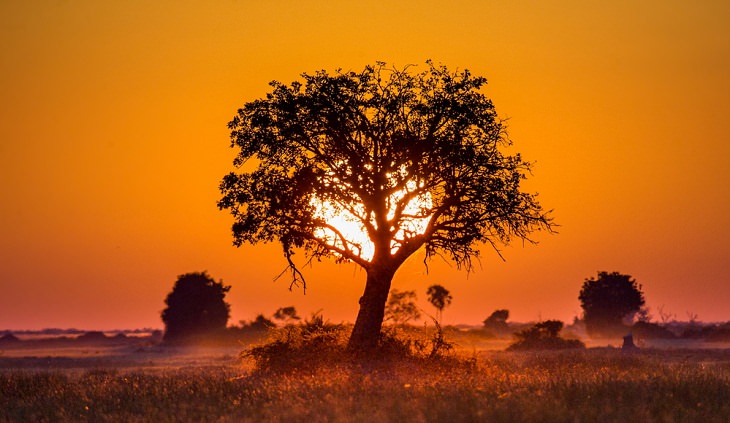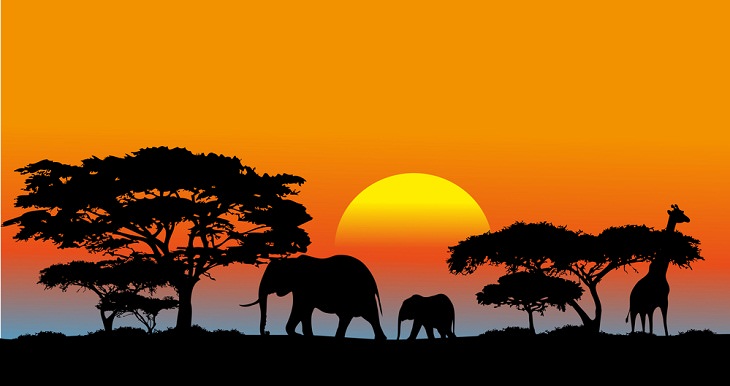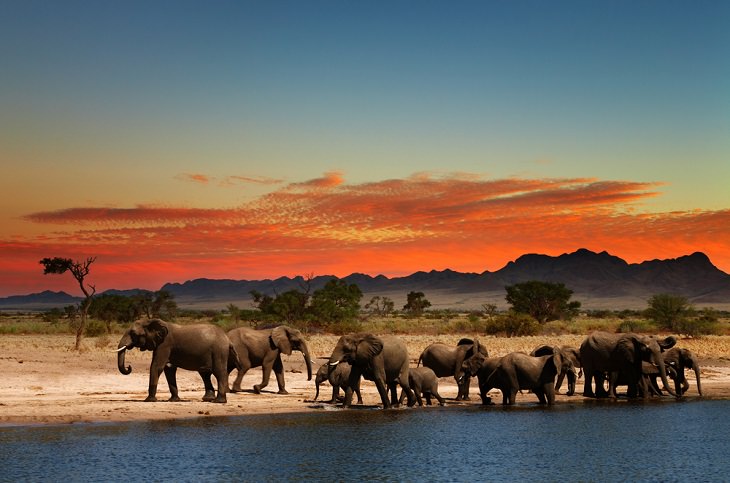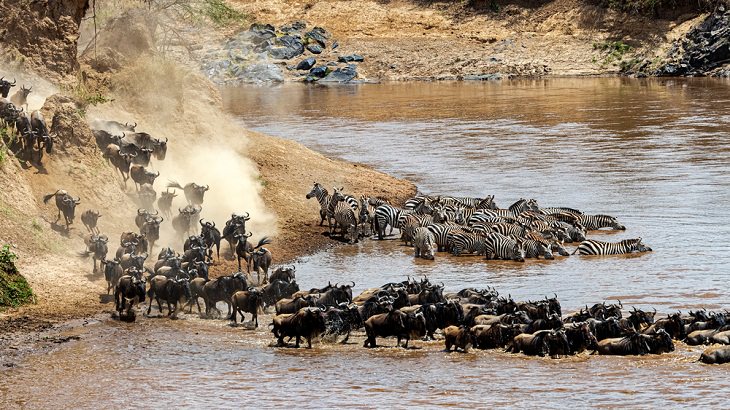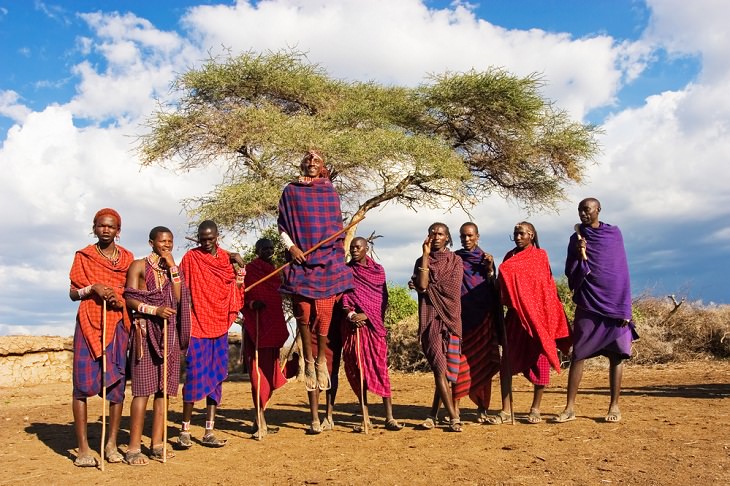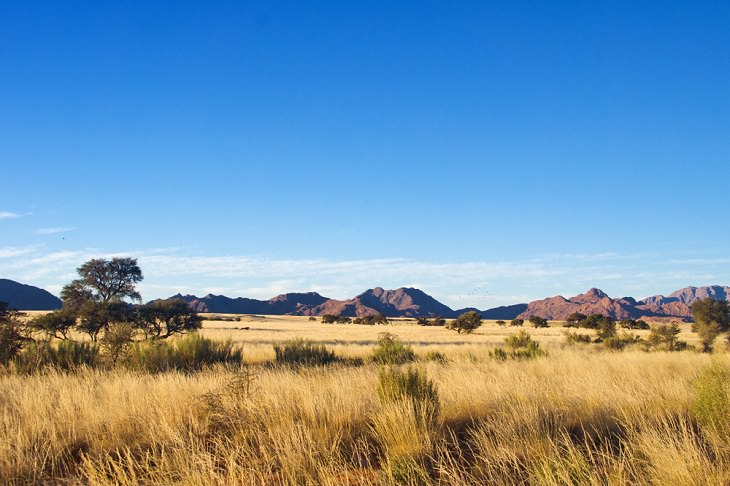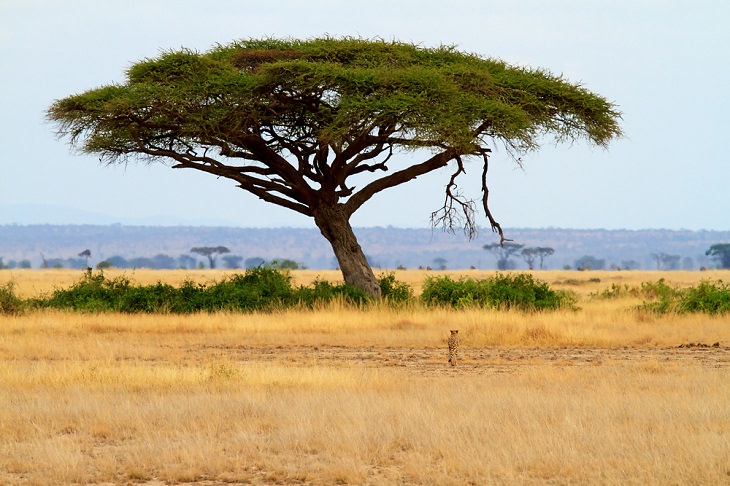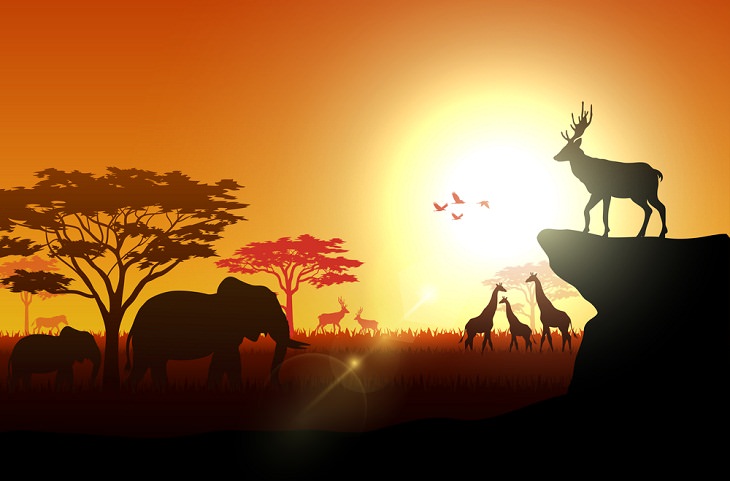Many will be surprised to know that the African savanna is not the only savanna in the world. Apart from Africa, savannas can also be found in places like Colombia, Brazil, Portugal, and the United States. In fact, savannas exist on all continents except for Antarctica! Surprised? In that case, let's get to know the savanna as an ecosystem a little better.
A savanna, also spelled savannah, is any kind of ecosystem that is distinguished by a continuous grassy layer, occasionally interrupted by both trees and a mix of shrubs and grassland. Generally, savannas grow in tropical regions where the conditions are warm to hot year-round. The majority of the rainfall falls to a few months each year. The trees in a savanna are spaced in a way that their tops don’t often overlap. This open canopy allows for sufficient light to reach the ground.
The largest savannas are in Africa, which is exactly why it is the most famous savanna region in the world.
2. 65% of Africa is the savanna
Research has shown that nearly 65 percent of Africa is covered by savanna! It is the largest tropical grassland in Africa, which extends into Zimbabwe, Botswana, and South Africa. The most well-known savanna in Africa is the Serengeti, located in Tanzania.
The majority of the African savanna is covered with trees, canopies, plants, and woodlands. The climate here is mostly warm, with temperatures ranging from 68°F (20°C) to 86°F (30°C). Savannas are estimated to cover approximately 20% of the Earth’s land area.
3. The wildlife here is incredibly diverse
One of the biggest highlights of the African savanna is its incredibly diverse wildlife. It’s one of the best places in the world to marvel at all kinds of animals, big or small. Some of the most well-known animals found in the African savanna are the wildebeest, warthogs, elephants, zebras, rhinos, gazelles, hyenas, cheetahs, lions, leopards, ostrich, starlings, cranes, rhinos, and weavers.
Here, you get to witness one of the most remarkable natural events in the world – the Great Migration. Every year, millions of zebras, wildebeest, and other antelope species make an extraordinary journey across Tanzania and Kenya while facing crocodile-infested waters and terrestrial predators. Witnessing this spectacular event must be quite surreal.
4. Many people live in the savanna too
The African savanna is also home to many people, primarily farmers, who grow crops that can resist long dry spells. The best-known people of this region are the Masai - a wide range of groups who share an identical language along with cultural and social similarities. They settled in the Serengeti between the 1600s and 1700s. The Masai live in harmony with the surrounding wildlife. They have a vibrant culture and mainly live on sheep breeding, farming, and trade. The Masai are known to be great cattle-herders and warriors. They keep moving once in a while, as a way to make sure that their cattle don’t overgraze any particular area.
Bushmen are another famous group of people living in the African savanna. These indigenous peoples are largely hunter-gatherers, and they have lived in the region for tens of thousands of years. Their lifestyle and social organization are considered to be very similar to those of the late Palaeolithic people. These tribes are also famous for their deep connection with the natural world. Currently, there are about 100,000 Bushmen across Botswana, Namibia, South Africa, and Angola.
5. A large part of Africa’s natural resources come from the savanna
The typical image of the African savanna is that of a rolling grassland filled with diverse animals. However, the savanna grasslands are full of natural resources, too. In fact, a large part of Africa’s natural resources come from the savanna.
The African savanna is home to such natural resources as water, livestock, lumber, coal, oil, wheat, gas, oats, and livestock. Food crops like corn, millets, maize, wheat, sorghum, and sugar cane are also planted in the savanna. A part of these crops feeds the people who live in the region, but large quantities are also exported to other parts of the world.
6. The African savanna is covered by a wide variety of plant life
A large part of the African savanna is covered in different types of grasses such as lemongrass, Rhodes grass, star grass, Bermuda grass, elephant grass, red oats grass, and star grass. Plenty of trees and plants like the baobab tree, jackalberry tree, acacia tree, manketti tree, river bushwillow, and umbrella thorn acacia are also scattered across the area.
The dry season and the drought make it tough for the plants to survive in the savanna. They store water and energy in their roots, bulbs, or trunks. Some plants even have roots that go deep into the ground to reach the low water table.
7. The African savanna is being affected by humans and global warming
Like countless other ecosystems in the world, the African savanna, too, is affected by humans and global warming. Human activities like deforestation, illegal poaching, and poor land management have all adversely affected the savanna. Studies have also indicated that the Sahara Desert is expanding and encroaching on this fragile ecosystem.
The imbalance in the savanna's ecosystem can eventually trigger a chain reaction that can affect the wildlife and plant life forever. The existence of the vast grasslands is crucial for the regulation of the ecosystem, as they sustain a variety of wildlife and plants. The tropical woodlands of the savanna also store lots of carbon and releases plenty of oxygen, thereby ensuring global climate regulation. Thus, having a weakened savanna will negatively impact planet Earth too.
Share this post with your friends and family!

